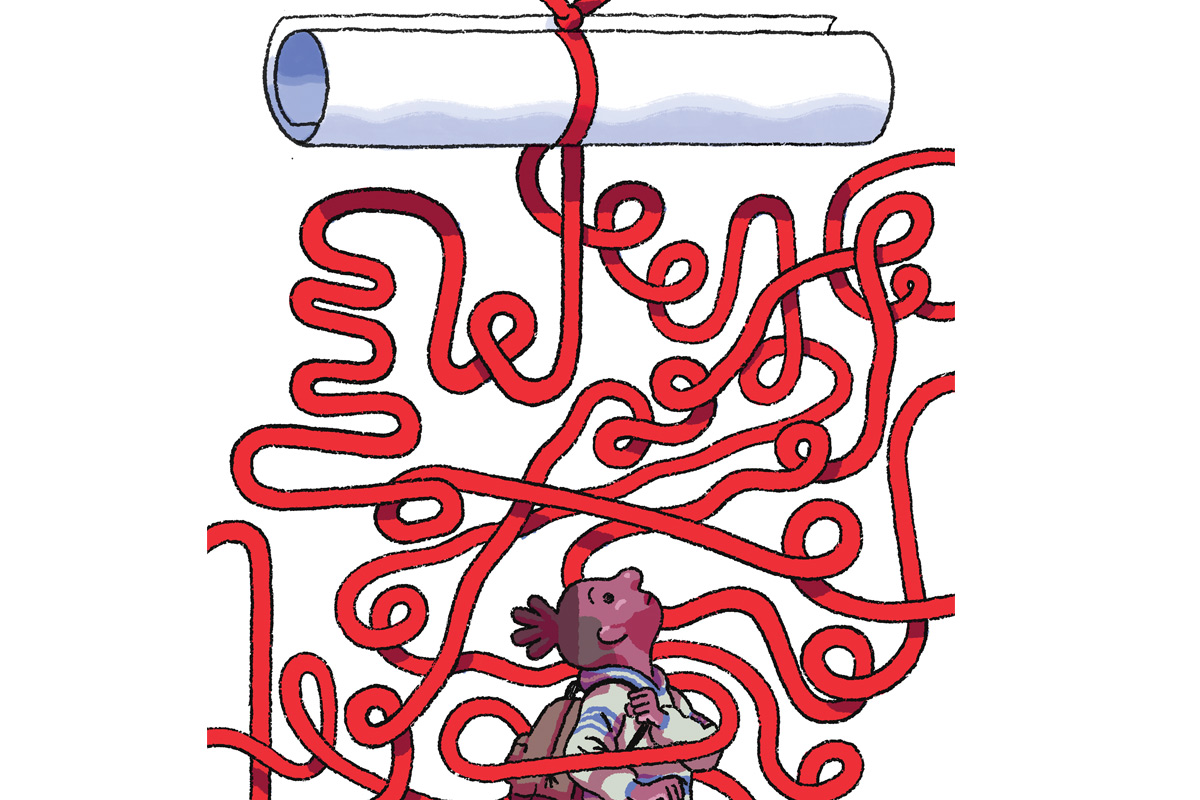It’s an American article of faith: A college degree brings upward mobility and a better life. It’s also a good investment for society. According to The Public Matters, a Teachers College public opinion project, most Americans believe — rightly — that academic research contributes to scientific advances, while higher education elevates national prosperity, personal earning power and civic participation.
But academia is facing big challenges, from within and without. Lower-income, minority and immigrant students are attending college in record numbers, but the majority aren’t completing their degrees. Colleges aren’t set up to support students with job and family responsibilities. Professors aren’t taught how to teach, so they lack the skills to connect with students from different cultural backgrounds. Meanwhile, states are reducing higher education spending, and the public, on the whole, views colleges and universities as standing outside the political mainstream.
It’s a watershed moment that calls for a comprehensive approach. Teachers College is working on it.
Below, read:
I. Staying the Course: More people are attending college, but many aren't graduating
I. Staying the Course: More people are attending college, but many aren't graduating
Death and taxes may be life’s only certainties, but the benefits of a college degree are pretty bankable, too.
“We know that a college degree is strongly associated with greater voting participation, involvement in community organizations, and better physical and mental health — so something happens in a college experience that leads that way,” says Thomas Brock, Director of TC’s Community College Research Center (CCRC). And, reporting on research in six states, Thomas Bailey — CCRC’s founder and now TC’s President — and economist Clive Belfield of Queens College-CUNY, conclude that a person with an associate’s degree annually earns, on average, between $4,640 and $7,160 more than someone who doesn’t finish a two-year college degree.
[Read The Pathfinder, a profile of new Teachers College President Thomas Bailey.]
Yet finishing, it seems, is the problem.
A 2017 report by the American Academy of Arts & Sciences’ Commission finds that while 90 percent of today’s high school graduates are likely to enroll in an undergraduate institution during young adulthood, those schools are “more successful in enrolling students than they are graduating them.” Sliced another way: There are currently about 17 million U.S. undergraduates, up from 6 million in the mid-1960s — but by one measure, only 60 percent of bachelor’s degree candidates achieve their goal. Only 30 percent who are pursuing a those credentials.
Why aren’t people staying the course? Lower-income students often hold jobs and support families. They may receive poor guidance about what to study, or the courses they need may be inconveniently scheduled. They may struggle because of their previous preparation, or because they are returning to school. They may get demoralized in remedial courses that don’t help, award no credits and cost time and money.
“A lot of students don’t have 40 hours a week to write papers. If we don’t organize colleges to recognize the realities of people’s lives, we’re going to be disappointed in what they do.”
— Aaron Pallas
Research by CCRC finds that addressing each of these problems in isolation does not achieve long-term effects — which suggests that the combination of all of them is what forces students to quit.
“We need a comprehensive approach,” says Bailey, “and TC, with its substantive diversity, is the place to create one.”
In their recent book, Redesigning America’s Community Colleges: A Clearer Path to Student Success, Bailey and his CCRC co-authors, Shanna Smith Jaggars and Davis Jenkins, outline just such an approach. Known as Guided Pathways, it calls for:
- Colleges to create coherent, easy-to-understand programs or “pathways” for students — whether to employment or to transfer to a four-year college — that have default course sequences but can be customized with a counselor.
- Students to choose and enter those pathways through early career counseling — and, for those with academic weaknesses, through well-designed help in college-level courses (“co-requisites”) rather than stand-alone remediation.
- Advisors, aided by technology, to help students stay on a chosen path or, over time and with greater experience, change or amend it.
- Faculty to ensure, by assessing portfolios of student work and other indicators, that students are actually learning skills essential to their own goals.
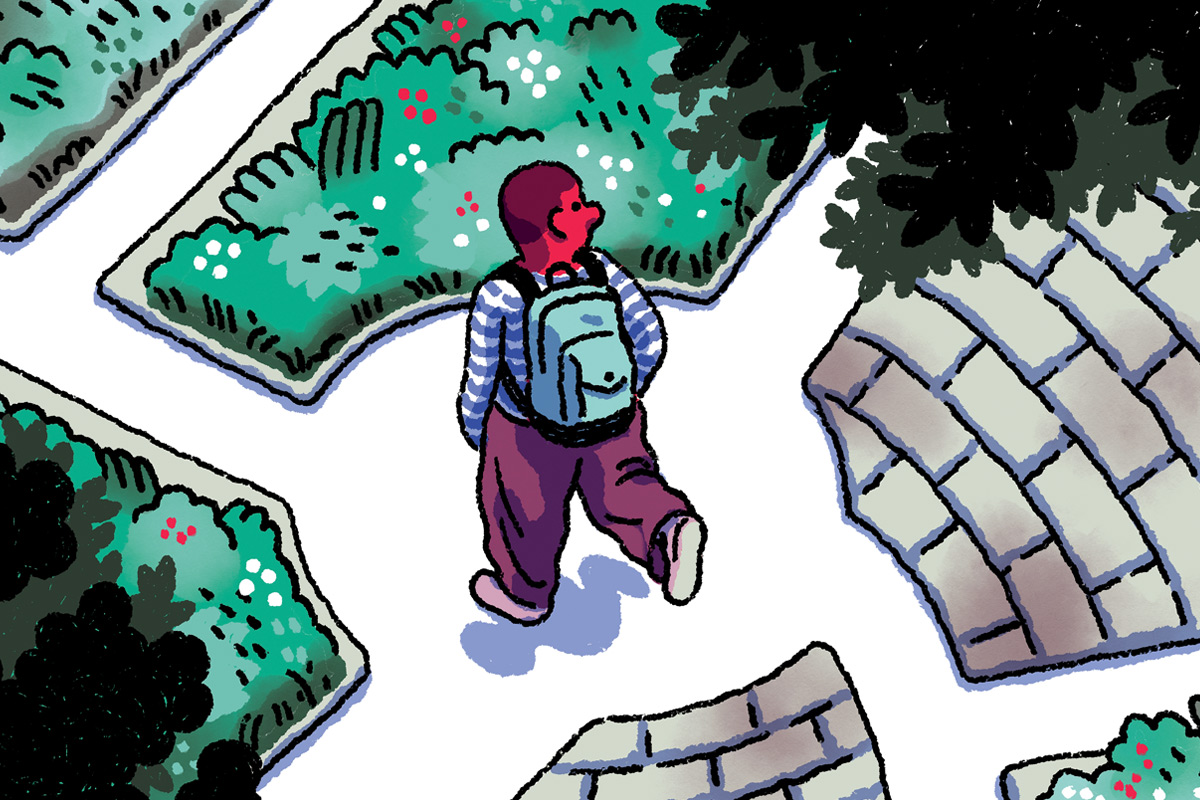
CCRC is working in dozens of colleges to coordinate the implementation of these elements. TC faculty are also working independently on many of the same fronts, including:
Ensuring college readiness. “We must address readiness on a pre-K-16 continuum,” says Michelle Knight-Manuel, Professor of Education and Associate Dean. A former teacher of English as a Second Language, Knight-Manuel has served as Director of Culturally Relevant College and Career Readiness for the New York City Department of Education.
“Clearly higher education, and high school, too, should put a greater premium on advising students. We’d hope for smaller caseloads and more one-on-one relationships between counselors and students.”
— Thomas Brock
“Some people say not every child should go to college,” she says, “but every child should have the option.” Knight-Manuel has assisted educators at 40 New York City public schools in establishing “culturally relevant, college-going cultures that reflect the cultural knowledge, background and interests of their students.”
In these schools, which serve predominantly black and Latinx students, and where typically a single college guidance counselor serves up to 700 students, Knight- Manuel has led professional development in creating a building-wide sense of responsibility for focusing kids on college. For example, sixth-graders are encouraged to visit colleges, and all teachers can play a significant role in connecting higher education to student’s lives.
“Cultural relevance must be taken into account,” says Knight-Manuel, co-author with her former TC student, Joanne Marciano, of Classroom Cultures: Equitable Schooling for Racially Diverse Youth (Teachers College Press 2018). “We have to show students why college is important to where they see themselves in the future.”
Improving teaching at undergraduate institutions. “The richness and rigor of undergraduate learning depend upon the quality of instruction,” declares the AAAS report. Yet “faculty aren’t taught how to teach,” says Anna Neumann, Professor of Higher Education. (See the story Rewriting the Instruction Manual below.)
Making college navigable for students with complex lives. “A lot of students don’t have 40 hours a week to write papers,” says Aaron Pallas, TC’s Arthur I. Gates Professor of Sociology & Education. “If we don’t organize colleges to recognize the realities of people’s lives, we’re going to be disappointed in what they do.”
At the City University of New York, the Accelerated Study in Associate Programs initiative (ASAP) groups students into faculty-supported cohorts; consolidates their class schedules; supports full-time enrollment through tuition waivers when financial aid leaves a gap; helps pay for textbooks; and provides students with New York City Transit MetroCards, personalized advisement, and tutoring and career development. ASAP’s three-year graduation rate, according to an evaluation by MDRC, a nonprofit social policy research organization, is 53 percent, versus just 23 percent for students in comparison groups, and 48 percent for students who took remedial courses versus just 21 percent for comparison students. Students from underrepresented groups see even greater benefits.
A cost-benefit evaluation conducted by TC education economist Henry Levin found that each dollar invested in ASAP by taxpayers returned $3 to $4 in benefits in higher tax revenues and lower costs of spending on public health, criminal justice and public assistance. Enrolling 1,000 students in ASAP would generate $46 million more in net fiscal taxpayer benefits than would enrolling them in the conventional degree program.
CCRC is currently studying Bronx Community College’s eff orts to bring ASAP to scale.
Improving college advisement. “Clearly higher education, and high school, too, should put a greater premium on advising students,” says Brock. “We’d hope for smaller caseloads and more one-on-one relationships between counselors and students. But budget and staffing limitations aren’t going away.” Student-to-counselor ratios are significantly higher in high-poverty or predominantly minority high schools.
Supported by the Gates Foundation, CCRC has been evaluating Integrated Planning and Advising for Student Success (iPASS), a technology platform to assist students with program and course selection and find needed support services.
CCRC is also following a California eff ort to assess high school students’ college-readiness skills and share the results with school guidance counselors. The low-cost program has reduced the amount of time that students later spend in college remedial courses.
Avoiding the remedial education trap. Two years ago, TC’s Judith Scott-Clayton, Associate Professor of Economics & Education, found that tens of thousands of students were unnecessarily placed in remedial courses at more than 50 community colleges that based assignments on a brief standardized test. She demonstrated that remedial assignments based on high school grade point averages would be more accurate, and that a quarter of remedial students would pass college courses with a B or higher. Her work helped prompt a California mandate to use high school grades instead of standardized placement tests to decide which classes community college students should take. Now a federally funded center housed at CCRC is evaluating that approach in the State University of New York System.
It’s too early to know, but the community college world is betting that employing all of these strategies together will dramatically improve student outcomes. However, the comprehensive approach requires more funding at a moment when higher education is facing big challenges.
A majority of respondents polled complain that colleges lean politically to the left. Most oppose affirmative action in college admissions.
Meanwhile, prompted by the 2008 recession, states have reduced higher education spending. Adjusting for inflation, overall state funding for public two- and four-year colleges in 2017 was nearly $9 billion less than it was nine years ago. Community colleges, with the lowest-income students, get the smallest slice of the pie.
The result, says Kevin Dougherty, Professor of Higher Education & Education Policy, is deeper inequity in a system in which more than half of all low-income and minority undergraduates attend community colleges and 10 percent of institutions nationwide command 70 percent of endowment funding.
The nation’s future clearly depends on making higher education work for a larger and more diverse population. Schools of education “have to take the lead in creating a society where everyone has an opportunity for a high-quality life,” says Knight-Manuel. “We need to act as leaders and continue research that gives colleges the tools and policies to stay on the front line of what is needed for a democratic society.”
—Steve Giegerich
II. Rewriting the Instruction Manual: To improve higher education, how about starting with the teaching?
Anna Neumann was six when her parents, Holocaust survivors, moved the family from Israel to Texas, landing in Brownsville — just blocks from the Mexican border. Most of Neumann’s new classmates were Hispanic, and her mother, who spoke seven languages despite never finishing high school, adopted Spanish as her primary tongue outside the home. After majoring in English at the University of Texas at Austin, Neumann was recruited by her former high school principal to develop a tutoring program at Texas Southmost College, the community college she had herself attended in Brownsville, where many students were her friends and former classmates.
Today, as Professor of Higher Education at Teachers College, Neumann applies those experiences to a glaring gap in American higher education.
“Most faculty aren’t taught how to teach,” she says. “They’re knowledgeable and passionate about their fields, but they’re not prepared to think about other people’s thinking, and to help them shape their thinking.” That deficiency stands out in classrooms at urban public institutions and community colleges that primarily serve low-income, minority and immigrant students — a demographic, Neumann points out, that will become the norm as the United States becomes a majority non-white nation during the next 25 years.
Clearly if teaching is going to improve in higher education, colleges and universities are going to have to require some kind of teaching instruction for professors — and to ensure that good teaching is incentivized and rewarded.
“The core purpose of a college education — of students learning something, particularly well and deeply—has gotten lost,” she says. “The economic benefits are important, but if we don’t study higher education with people’s minds and lives in the middle of it, something is really wrong.”
Student-Centered
In their forthcoming book, College Teaching Reconsidered: Repairing the Heart of a College Education, Neumann and Aaron Pallas, TC’s Arthur I. Gates Professor of Sociology & Education, champion cognitively responsive teaching (CRT), in which teachers continuously adjust their lessons, and how they teach them, to what students already know rather than following a one-size-fits-all lesson plan.
“I learned the hard way about college teaching,” Pallas recalls. “Some years ago I asked Deborah Ball [then a mathematics education professor at Michigan State, and subsequently Dean at the University of Michigan School of Education] to watch me teach a statistics class. Afterward, she gently said, ‘Do you know what your students are learning?’ And I realized that, day to day, minute to minute, I had no idea. I knew what I was presenting to them; I didn’t know how they made sense of it.”
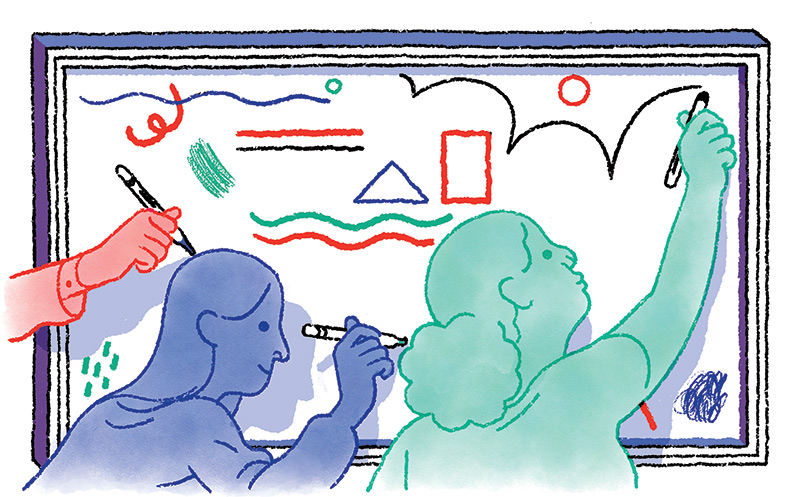
The book draws on Neumann’s work through MetroCITI (Metropolitan Colleges Institute for Teaching Improvement), an initiative she founded at Teachers College eight years ago to help instructors in “diversity- intensive” institutions improve their teaching in the humanities, arts, sciences and social sciences. CRT rests on three long-standing principles of progressive education theory. The first, Neumann says, is “subject matter matters,” meaning that how students interact with subject matter must be shaped by the core tenets of a discipline or interdisciplinary field. Teachers need to bear that in mind as they plan their teaching.
“Most faculty aren’t taught how to teach. They’re knowledgeable and passionate about their fields, but they’re not prepared to think about other people’s thinking, and to help them shape their thinking.”
— Anna Neumann
The second is that culture shapes students’ prior knowledge, and, more specifically, that “ideas that are the starting point for subject-matter learning are deeply rooted in students’ family and community lives, past schooling and personal experiences.” An encounter with a new subject-matter idea often “surfaces” students’ prior knowledge and experiences — something teachers can use to support their teaching.
“Culture is a huge mediator of learning — so you don’t just dump a pail of new knowledge on students, but instead, you use the students’ ways of thinking to relate to that,” Neumann says. “Teaching of this sort can be really hard.” For example, students from some cultures believe in the supernatural. “Religion and spirituality frame their entire knowledge so you’ve got to respectfully find a space where they can hold two beliefs at the same time, even if those beliefs are in tension.”
The third guiding principle of CRT is that learning in higher education occurs when a student discovers linkages between what she or he knows already, and a new academic idea. However, learning also occurs as a student “acknowledges and works through differences between his or her prior views and beliefs, and new ideas that instructors or texts represent.”
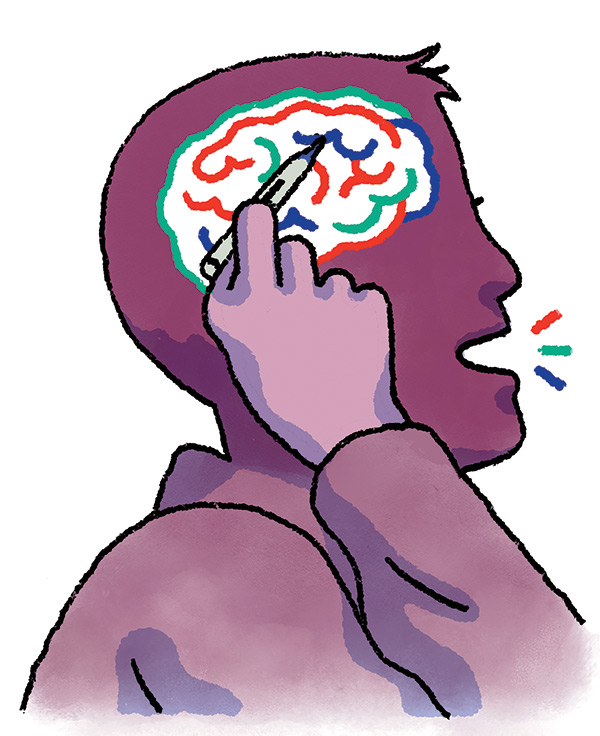
Increasing Impact
In a 2012 speech she delivered as the outgoing president of the Association for the Study of Higher Education, Neumann described an undergraduate philosophy course she had observed in a diversity-intensive college. The instructor, whom she calls Sofi a, used CRT to help her students grapple with Descartes’ Meditations on First Philosophy.
In Sofi a’s class, the students quickly related Cartesian doubt — the notion that we can’t trust our senses as a source of knowledge — to the movie The Matrix, in which a vast computer system keeps people immobilized in a dream state. Sofi a let them pursue this line of comparison, but also nudged them toward consideration of deeper questions, such as why they were resistant to the possibility that the world as they know it might not, in fact, exist. Increasingly, the students referred to passages from Descartes, while “references to The Matrix began to dissipate.”
Although the linkages between students’ life experiences and the humanities may be more direct, the book also describes how Pallas now leads groups of postsecondary faculty and students in grappling with how to describe the middle of a distribution of data using neither terms such as “mean” or “average” nor formulas that they may have learned as early as elementary school.
Clearly if teaching is going to improve in higher education, colleges and universities need to require some kind of teaching instruction for professors — and to ensure that good teaching is incentivized and rewarded.
For her part, Neumann is currently searching for ways to enlarge and improve the content of what she offers the faculty attending her teaching institutes. She is also exploring ways to remodel and move these institutes into post-B.A. professional schools, such as law schools serving first-generation learners. She and Pallas hope to catalog who is using their teaching model, and how best to support it — at the campus level and beyond.
—Steve Giegerich
III. What to Expect When You’re Accepting: An app that helps first-generation college students take the final step
Each fall an estimated one-third of all high school graduates accepted to college fail to show up. Many are low-income and first-generation students. One reason why: a lack of input from uninformed parents and over-burdened guidance counselors on what to expect from campus life.
“They may hear, ‘We want you to go to college,’” says TC Professor of Education Michelle Knight-Manuel, former Director of Culturally Relevant College and Career Readiness for the New York City Department of Education. “But there is no specific information about what that means.”
Enter BestFit, a smartphone app, to connect would-be first generation students with college- going peers. Characterized as a hybrid of Tinder and Snapchat, BestFit was created by 2018 TC graduates Asha Owens, Rebecca Kwee and Danielle Llaneza.
"BestFit changes the power dynamic. By helping first-generation students learn more about a school, we help them succeed.”
—Rebecca Kwee (M.A. ’18)
“Most of college recruitment targets traditional college students,” says Kwee, who received her master’s in Higher & Postsecondary Education. “But our target users generally have low completion rates. BestFit changes the power dynamic. By helping first-generation students learn more about a school, we help them succeed.”
Unlike marketing brochures that offer bland images of college life, BestFit helps a first-generation student learn about costs, class scheduling, social adjustment and other challenges. Unvarnished videos by college students help low-income and underrepresented students identify colleges and universities that are an academic, social and financial fit.
Kwee, Owens and Llaneza created BestFit for an EdTech innovation contest at TC. They took top honors. Since then Kwee and Owens have presented the app at the prestigious South by Southwest conference; created a licensed corporation, BestFit LLC; won a $100,000 cash prize at a national contest held by New York University’s Social Entrepreneurship Program; and earned a $10,000 fellowship from a nonprofit.
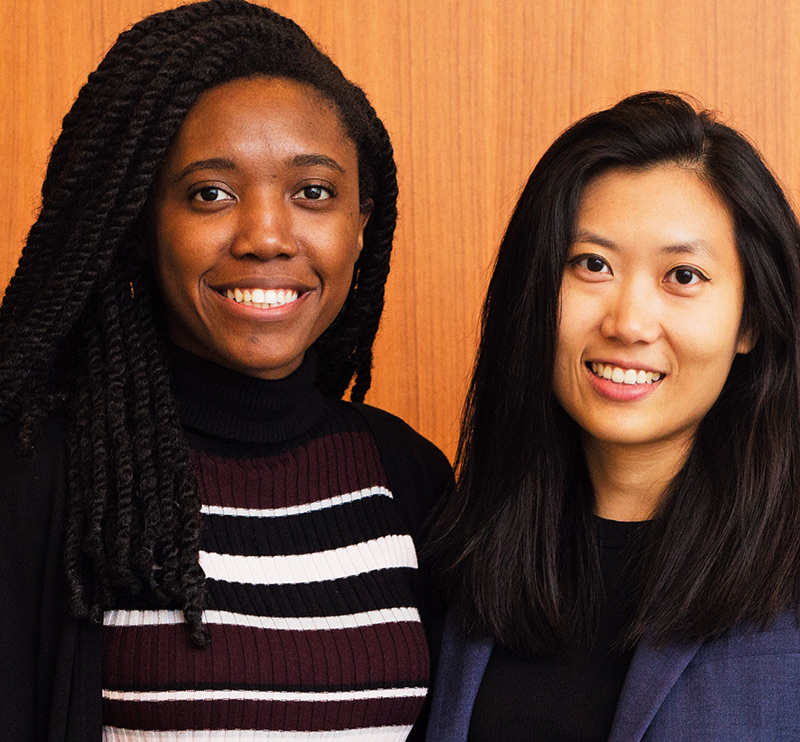
APP FOR THE GAP Beyond helping students, Owens (left) & Kwee want to help colleges fight costly “summer melt.”
Owens (CEO) and Kwee (CFO) are now immersed fulltime in launching BestFit LLC. Llaneza, applying to doctoral programs in Developmental Psychology, remains connected to the project as an adviser. As of early fall, the BestFit team was taking steps to introduce a pilot program in New York City schools.
Owens believes BestFit is perfectly positioned to meet the needs of higher education as a whole, and at-risk students in particular, as colleges and universities prepare for a majority-minority U.S. population.
“With the huge demographic shift, colleges need to start changing,” she says, adding that the “summer melt” in accepted students costs higher education institutions $17 billion annually in tuition and fee revenues. “That’s what we want to help them do.”
—Steve Giegerich
